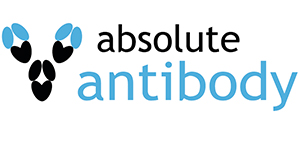Anti-COVID-19 & SARS-CoV S glycoprotein (CR3022)
Anti-COVID-19 & SARS-CoV S glycoprotein [CR3022], Recombinant, IgG2b kappa, Mouse
Artikelnummer
ABAAb01680-3.0
Verpackungseinheit
200 μg
Hersteller
Absolute Antibody
Verfügbarkeit:
wird geladen...
Preis wird geladen...
CloneID: CR3022
Antigen Long Description: The original monoclonal antibody was generated through an scFv library derived from a peripheral blood lymphocytes of a patient exposed to the SARS-CoV.
Buffer Composition: PBS with 0.02% Proclin 300.
Chimeric Use Statement: This chimeric mouse antibody was made using the variable domain sequences of the original Human IgG1 format, for improved compatibility with existing reagents, assays and techniques.
Available Custom Conjugation Options: AP, HRP, Fluorescein, APC, PE, Biotin Type A, Biotin Type B, Streptavidin, FluoroProbes 647H, Atto488, APC/Cy7, PE/Cy7
Uniprot Accession No.: P59594
Specificity Statement: This antibody binds the amino acids 318-510 in the S1 domain of the SARS-CoV Spike protein as well as SARS-CoV-2 (COVID-19) Spike protein. The antibody also binds to P462L-substituted S318–510 fragments of the SARS spike protein. The binding epitope is only accessible in the "open" confromation of the spike protein (Joyce et al. 2020).
Application Notes (Clone): This antibody binds to both SARS-CoV and SARS-CoV-2 with high affinity (PMID: 16796401 & 32065055). The initial characterization of the binding of this antibody was performed by ELISA and indicates potential for the development of diagnostic assays, as both virus-capture assays, or as controls in serological assays measuring immune-responses to virus exposure. Human IgG1, IgG3, IgM and IgA isotypes are available to mimic antibody responses seen in COVID19 (Amanat et al. 2020). Human IgG2 and IgG4 subtypes, which are also seen in a small subset of COVID-19 patients, are also available to investigate their role in the response to SARS-CoV-2. The original human IgG1 version of the antibody works synergistically in combination with another non-ompeting SARS antibody CR3014 and is a potential candidate for passive immune prophylaxis of SARS-CoV infection (Meulen et al., 2006). The original antibody (human IgG1) was also reported to bind the 2019-nCoV RBD (KD of 6.3 nM). This antibody has been attributed a potential to be developed as a therapeutic agent, alone or in combination with other neutralizing antibodies for treatment of 2019-nCoV infections (Tian et al., 2020). Bates et al. 2021 (PMID: 32766589) used CR3022 in a immunofluorescence assay.
Antigen Long Description: The original monoclonal antibody was generated through an scFv library derived from a peripheral blood lymphocytes of a patient exposed to the SARS-CoV.
Buffer Composition: PBS with 0.02% Proclin 300.
Chimeric Use Statement: This chimeric mouse antibody was made using the variable domain sequences of the original Human IgG1 format, for improved compatibility with existing reagents, assays and techniques.
Available Custom Conjugation Options: AP, HRP, Fluorescein, APC, PE, Biotin Type A, Biotin Type B, Streptavidin, FluoroProbes 647H, Atto488, APC/Cy7, PE/Cy7
Uniprot Accession No.: P59594
Specificity Statement: This antibody binds the amino acids 318-510 in the S1 domain of the SARS-CoV Spike protein as well as SARS-CoV-2 (COVID-19) Spike protein. The antibody also binds to P462L-substituted S318–510 fragments of the SARS spike protein. The binding epitope is only accessible in the "open" confromation of the spike protein (Joyce et al. 2020).
Application Notes (Clone): This antibody binds to both SARS-CoV and SARS-CoV-2 with high affinity (PMID: 16796401 & 32065055). The initial characterization of the binding of this antibody was performed by ELISA and indicates potential for the development of diagnostic assays, as both virus-capture assays, or as controls in serological assays measuring immune-responses to virus exposure. Human IgG1, IgG3, IgM and IgA isotypes are available to mimic antibody responses seen in COVID19 (Amanat et al. 2020). Human IgG2 and IgG4 subtypes, which are also seen in a small subset of COVID-19 patients, are also available to investigate their role in the response to SARS-CoV-2. The original human IgG1 version of the antibody works synergistically in combination with another non-ompeting SARS antibody CR3014 and is a potential candidate for passive immune prophylaxis of SARS-CoV infection (Meulen et al., 2006). The original antibody (human IgG1) was also reported to bind the 2019-nCoV RBD (KD of 6.3 nM). This antibody has been attributed a potential to be developed as a therapeutic agent, alone or in combination with other neutralizing antibodies for treatment of 2019-nCoV infections (Tian et al., 2020). Bates et al. 2021 (PMID: 32766589) used CR3022 in a immunofluorescence assay.
| Artikelnummer | ABAAb01680-3.0 |
|---|---|
| Hersteller | Absolute Antibody |
| Hersteller Artikelnummer | Ab01680-3.0 |
| Verpackungseinheit | 200 μg |
| Mengeneinheit | STK |
| Reaktivität | Virus |
| Klonalität | Recombinant |
| Methode | Immunofluorescence, ELISA, Neutralization, Surface Plasmon Resonance (SPR), Crystallography |
| Isotyp | IgG2b kappa |
| Wirt | Mouse |
| Produktinformation (PDF) | Download |
| MSDS (PDF) | Download |

 English
English







